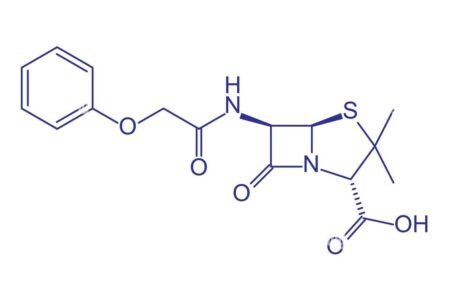Inomyalgia is a relatively new term in the field of muscle pain and musculoskeletal disorders. It has recently gained a lot of attention for its efforts to appropriately identify pain deep in the muscles’ fibres as well as chronic pain. Although the diagnosis is not yet clinically mainstream, it fills a space, addressing the experience of ongoing and further unexplained deep muscle pains, which vary from general myalgia, fibromyalgia, and myofascial syndromes.
What is Inomyalgia? A New View on Muscle Pain
Inomyalgia combines two roots:
- “Ino-“: Greek for fibre or sinew, highlighting deep muscle tissue components.
- “Myalgia”: the common term for muscle pain or soreness.
Put together, it suggests a syndrome characterised by pain originating deep within the muscle fibres, not just at the surface. For people whose pain is persistent, poorly understood, and exhausting, “inomyalgia” promises clarifying language and a tailored approach.
Key Symptoms
Those who may eventually be described as having inomyalgia often report:
- Deep, persistent muscle ache (not just superficial or after exercise)
- Chronic fatigue and muscle weakness
- Stiffness, reduced flexibility in larger muscle groups (back, neck, thighs)
- Sensitivity and tenderness, sometimes with “restless” sensations
- Worsening pain with inactivity or exposure to cold
- Sleep disturbances, mood impacts, and anxiety or depression due to the pain
These symptoms undermine quality of life, productivity, and mental health, making day-to-day tasks and enjoyment far more difficult.
Inomyalgia vs. Related Conditions
Fibromyalgia is the best-known umbrella term for widespread, unexplained muscle pain. Fibromyalgia is an issue which gives rise to diffuse tenderness and multiple “tender points”, cognitive symptoms (such as brain fog) and sleep issues. Inomyalgia is something different (as emerging literature and expert commentary suggest). Inomyalgia refers to ongoing pain that originates deep within muscle fibres, and there may be no other rheumatological or neurological features.
Myofascial pain syndrome causes muscle trigger points to develop. As per the current definition, inomyalgia is characterised not by the nodules but by diffuse fibre pain, which is prolonged in nature.
Polymyalgia rheumatica, inflammatory myositis, and neuropathic syndromes show standard features but originate from distinct pathological processes.
What Causes Inomyalgia?
The causes (or “etiology”) of inomyalgia remain the subject of research. Based on established knowledge about chronic muscle pain, likely factors include:
- Muscle overuse or repeated strain at work (for example, using the same motions repeatedly) can lead to microtears and inflammation.
- Bad posture and other physical strain may put the innermost muscles of your body under strain.
- Sedentary lifestyles: The absence of movement gradually weakens the deep tissues and causes tension, pain, and stiffness.
- Stress and mental health: Stress hormones alter the contraction and relaxation of muscles. Chronic psychological stress can make symptoms worse.
- Genetic factors or predispositions.
- Other diseases that may be a cause include rheumatologic, metabolic, or any imbalance in the endocrine system that can cause chronic muscle pain.
Diagnosis: How is Inomyalgia Identified?
Inomyalgia is yet to be codified into most medical guidelines. Today, we use terms such as myalgia, fibromyalgia, or myofascial pain. Discussions from both patient-friendly and clinical resources indicate that a diagnostic workup would involve:
- Detailed personal and medical history (pattern, duration, and triggers of pain)
- Physical examination, focusing on muscle tenderness and strength
- Laboratory tests (to rule out inflammatory, autoimmune, or metabolic disease)
- Imaging such as MRI or ultrasound (mainly to exclude injuries or severe disease)
- Exclusion of conditions like fibromyalgia (widespread pain, tender points), myositis (inflammatory changes), or polymyalgia rheumatica (inflammation in older adults)
Diagnosis is mainly by exclusion when common causes of muscle pain are ruled out, and deep, persistent discomfort remains the top complaint.
How Is Inomyalgia Treated?
There’s no one treatment that will get rid of inomyalgia, just like there isn’t one yet for fibromyalgia or myofascial pain. Management takes into consideration a range of aspects so that the pain-fatigue-stress cycle may be broken. Quality of life may thus be restored.
1. Physical Therapies
- Targeted stretching and strengthening: To reverse weakness and stiffness.
- Aerobic exercise (walking, swimming, gentle cycling): Slowly builds stamina and muscle health.
- Posture correction and ergonomic adaptation: Minimises deep tissue strain.
2. Medications
- NSAIDs (Non-steroidal anti-inflammatory drugs): Relieve pain and inflammation
- Muscle relaxants: Reduce spasm and persistent tightness
- Topical treatments (creams, gels)
- Low-dose antidepressants: Certain medications can interrupt chronic pain cycles, even if not depressed
3. Lifestyle Adjustments
- Regular activity: even if moderate, is essential for sustaining health
- Sleep hygiene: Addressing sleep disruption is central to breaking the pain cycle
- Mind-body therapies: Meditation, mindfulness, and cognitive behavioural therapy can help manage stress and pain response
- Use of heat and cold: Warm baths, hot/cold compresses for temporary relief
4. Complementary Therapies
- Acupuncture, hydrotherapy, massage, or gentle manual therapy may be beneficial for some
- Nutritional counselling and assessment for deficiencies
5. Psychological Support
- Chronic pain often triggers anxiety, depression, and other mental health issues. Integrated care with therapy or counselling as needed is essential.
Inomyalgia: Prognosis and What the Future Holds
Because inomyalgia is still being defined in the research community, its long-term outlook is evolving. Current understanding indicates:
- The condition is chronic, but symptoms can be managed/reduced with proper treatment and self-care
- The prognosis is best when addressed early, with a multidisciplinary approach combining physical therapy, lifestyle adaptation, medical treatment, and psychological support.
As awareness grows, it’s expected that:
- Diagnostic criteria will become clearer
- More precise, personalised therapies will emerge
- Patients will gain validation for their pain, reducing frustration and improving care outcomes
Frequently Asked Questions (FAQs) about Inomyalgia
Is inomyalgia the same as fibromyalgia?
No. Fibromyalgia includes widespread pain and other systemic symptoms like brain fog and fatigue, while inomyalgia refers explicitly to deep, persistent muscle fibre pain, possibly without other features.
Can I have inomyalgia without fibromyalgia?
Yes. The two may share chronic pain, but inomyalgia emphasises muscle-fibre-specific pain rather than the broad symptom constellation of fibromyalgia.
What conditions are similar to inomyalgia?
Myofascial pain syndrome (trigger points), polymyalgia rheumatica, myositis, and neuropathic pain may appear similar but have distinct causes and patterns.
Is inomyalgia a psychological disorder?
No. While stress and mood can exacerbate symptoms, inomyalgia is primarily a physical pain syndrome. However, addressing mental well-being is essential in management.
How is inomyalgia diagnosed?
Primarily through ruling out known causes of muscle pain (as in fibromyalgia or autoimmune disease) and recognising deep, persistent symptoms not explained by other findings.
Are blood tests or scans helpful?
They don’t diagnose inomyalgia directly but help exclude other diseases (e.g., inflammatory/autoimmune or metabolic disorders).
What is the treatment approach?
A combination of physical therapy, gradual exercise, good sleep habits, stress management, and, if appropriate, medications tailored for pain and muscle tension.
Can lifestyle changes prevent inomyalgia?
Minimising risk factors like poor posture, inactivity, and unmanaged stress reduces vulnerability, but not all cases are preventable, especially if genetics or underlying illness play a role.
Will the term inomyalgia become an accepted medical diagnosis?
If research validates its distinction from other pain syndromes, more precise definitions and criteria will likely be established, helping patients and clinicians communicate and treat more effectively in the future.
Key Points
- Inomyalgia provides a targeted way to describe deep, persistent muscle fibre pain, distinct from “generic” myalgia or fibromyalgia.
- Symptoms deeply affect daily living, but multidisciplinary, patient-centred care greatly improves outlook.
- Open dialogue with healthcare providers, attention to both physical and emotional well-being, and emerging research are reshaping how chronic muscle pain is understood and treated.
If you experience persistent muscle pain with no apparent cause, discuss inomyalgia and similar syndromes with a musculoskeletal pain or rheumatology specialist for the most personalised care.









